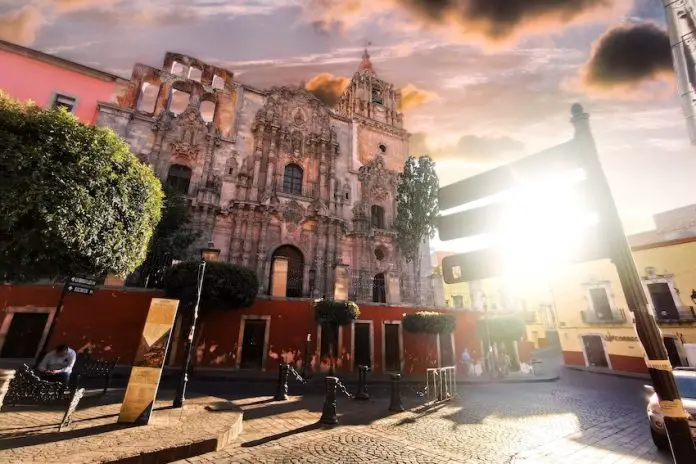Spirituality is embedded in Mexico, almost as if it was in the air. For many years, my husband and I were part of a meditation group that met from 8 until 9 on weekday mornings, in our adopted home of Guanajuato. Our teacher, an older Japanese Zen master named Akira, spoke very little Spanish, but that didn’t matter, because all he did was hold the space, set up the cushions, and ring the chimes at the start and close of the meditation.
During Covid, the group, like everything else, stopped, and it never really picked up again. Instead, every afternoon, Barry and I would sit in one of the five or six churches in Guanajuato that were open during the day – a practice we’ve continued ever since. This change turned out to be a blessing, because I began to experience a gentle, intimate kind of spirituality throughout Mexico that was different than anything I had ever known.
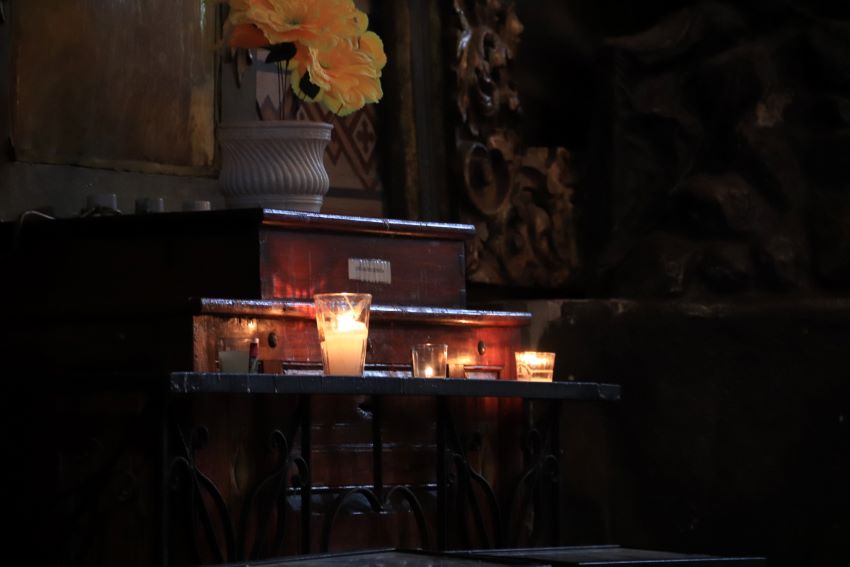
If you’re at all like us, you may yearn to practice some kind of spirituality, no matter how vague. The challenge is that the options you might be accustomed to are much fewer in Mexico.
They do exist, though, and here are five to consider:
- Attend services at English-language houses of worship. Many English-language Protestant denominations and Jewish groups in Mexico hold services in English. For example, in cities like San Miguel, Puerto Vallarta, Mexico City, and Lake Chapala, you can find Baha’i, Baptist, Unitarian, Episcopal, Charismatic, Christian Science, Mormon, Quaker, Jewish, Catholic, Sufi groups, and more.
Even cities with fewer expats have English-language services. Oaxaca, for example, has an Episcopal Church, and we sat with a Zen meditation group in Xalapa.
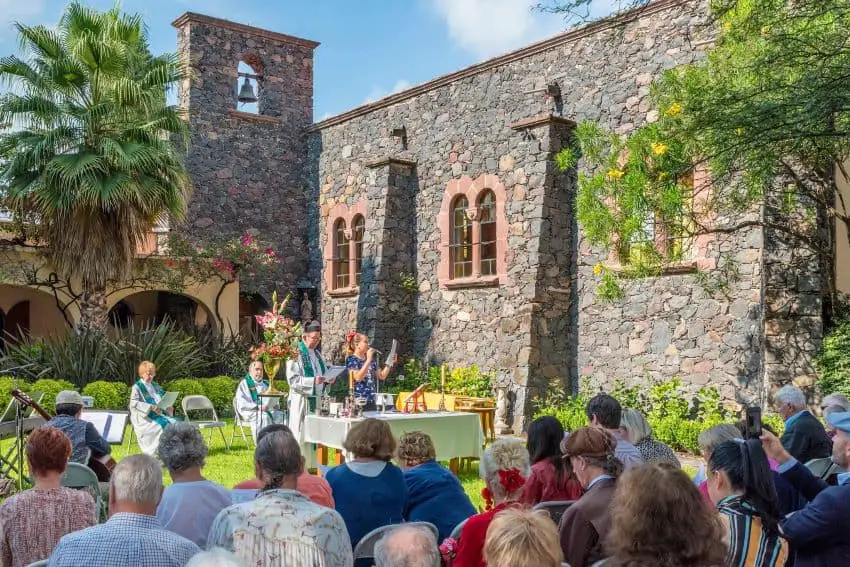
- Visit Mexican churches outside of services. I love to sit among the statues and icons, soaking up the atmosphere and scribbling in my journal, while I watch the elderly women tirelessly sweeping the tile floors or changing the flowers. In the Guanajuato Basilica, a narrow internal balcony runs along the walls near the ceiling. Sometimes I look up and trace the line of the balcony to its end, imagining myself a little girl lying up there, unseen, peeking down through the fluted columns at the worshippers below.
If you decide to go to Mass even without understanding everything the sacerdote says, you can still absorb the “smells and bells.” And if you’re like me, not following the sermon can be an advantage, because otherwise I’d start going down cognitive paths and arguing in my mind. At times, the less I know, the better.
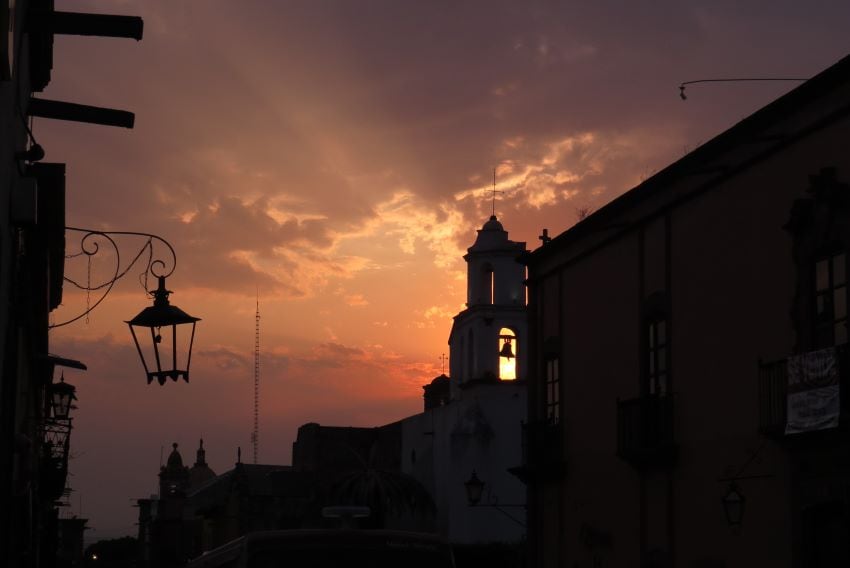
- Be resourceful and create your own ceremonies. Jewish expats in Guanajuato, for example, have a monthly Shabbat gathering held at rotating homes. One year, Barry and I went to a New Year’s service hosted by an expat and officiated by a visiting retired Episcopal minister.
- Adapt Mexican rituals. Mexico is a culture so rich in ceremony and ritual that many expats adapt some of them, such as people who build altars in their homes during Día de Los Muertos.
Curanderos are traditional healers who use herbal remedies, spiritual cleansing, and prayer to treat physical, emotional, and spiritual wounds.
Many Mexicans who aren’t curanderos also employ rituals. When we were remodeling our home, for example, each morning at the start of the work day our albañiles would light a candle to excise evil spirits. You too can do this whenever you want to remodel, paint, or cleanse a room. It’s the Mexican version of the feng shui ritual of walking through a room you want to cleanse, burning sage. Whether you intellectually believe a ritual helps is beside the point because rituals have power, regardless of your belief system.
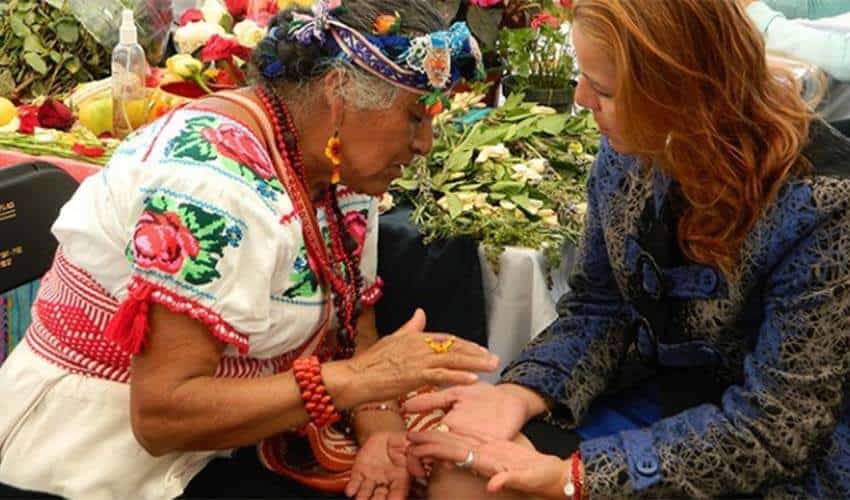
Of course, as foreigners, we need to be careful not to practice cultural appropriation. Different people draw the line differently, but in my opinion, as long as we conduct a ritual in the privacy of our own home, it’s not disrespectful.
- Find spirituality in ruins. I used to have no interest in ruins, but after years of living in Mexico, I’ve gradually become seduced. Mexico’s ancient sites offer a unique kind of enchantment, because they harmonize so beautifully with the surrounding landscape. Ruins feel as natural to me as trees and flowers.
One late afternoon, Barry and I were sitting on the grass behind Becán, a ruin in the Yucatán Peninsula. We were resting after clambering up and down the many steep steps like a pair of eight-year-olds. As I gazed at the enormous, multi-layered rock structure, backlit by the late afternoon sun, I wondered what stories lay embedded between those stones. I felt a sense of place greater than the sum of its crumbling, rocky parts. A dreamlike sense of timelessness came over me as I soaked in their beauty.
Ruins are for me what the Celts call a “thin place,” where the boundaries between worlds disappear and the gap between the spiritual and secular narrows. Especially today, in our hard, clashing era, they bring me a sense of comfort and hope. Despite the violent histories contained within them, Mexican ruins have endured for centuries — so maybe we will, too.
Mexican spirituality isn’t confined to churches. It infuses altars and bells, church balconies and alcoves, cemeteries and ruins — in other words, everywhere. And this immersive quality helps me feel my own fuzzy, undefined spirituality more deeply than ever before.
Louisa Rogers and her husband Barry Evans divide their lives between Guanajuato and Eureka, on California’s North Coast. Louisa writes articles and essays about expat life, Mexico, travel, physical and psychological health, retirement and spirituality. Her recent articles are on her website, https://authory.com/LouisaRogers
